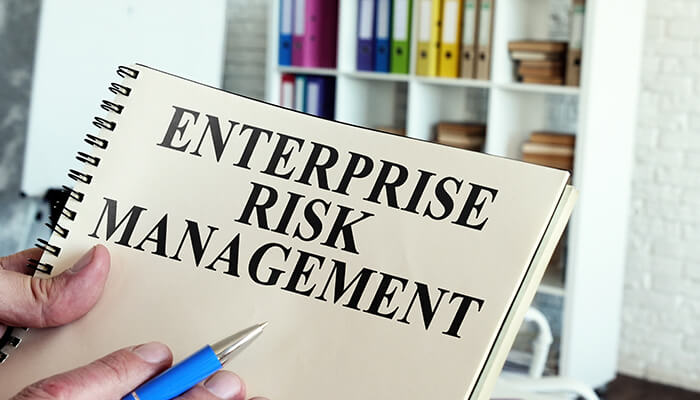Businesses take risks with the hope of a positive outcome in the end. But sometimes, the venture backfires and the organization encounters losses. Enterprise risk management (ERM) leverages resources to ensure the company maximizes profits and minimizes losses.
Typically, the ERM guides decision-making, ensuring the business takes well-calculated and planned risks that align with the organization’s goals, mission, vision, and objectives. Taking business risks requires a holistic approach. That means an ERM strategy that fosters growth should use a blend of internal controls, corporate governance, third-party providers, and risk management processes, essentially involving every business stakeholder.
Designing and implementing an ERM is a complex process requiring every stakeholder’s input, from the board of directors to the intern. As the practice continues to evolve, COSO establishes and updates companies on the emerging ERM guidelines to help them reach their maximum potential. You can use software, such as the GRC application, to automate and ease the process.
What is Enterprise Risk Management (ERM)?
Each department in your organization is probably already identifying and mitigating its own risks in unique ways. Instead of piecemeal risk mitigation by individual departments, enterprise risk management examines risks from the perspective of the entire business. Thus, ERM is a strategic framework that helps organizations identify, assess, and prepare for potential risks that might interfere with their operations and hinder the accomplishment of goals, objectives, and vision.
An ERM program assumes the big picture of every organizational risk and helps develop strategies to turn the threat into a reward, thereby averting potential losses. It enables the enterprise to undertake ventures within its risk appetite with reasonable assurance of positive outcomes. Effective ERM strategy requires harmonization and synchronization of all business entities, such that even the intern understands the risk action plan. Since the decisions from the top management might be at odds with the departmental assessment and hinder the implementation of a business-wide risk strategy, organizations should have a dedicated ERM team to help streamline operations.
Why do businesses need to incorporate ERM?
Enterprise risk management is a practice that enhances your organization’s chances for success. First, the ERM program helps the business identify opportunities, explore them, and boost returns. When it comes to risk appetite, the directors and managers can use the ERM approach to identify and prioritize risks while developing strategies for overcoming the potential hurdles. Thus, when a threat materializes, business operations do not stop. Instead, the risk action plan keeps the enterprise afloat.
ERM assumes a proactive approach that ensures the enterprise’s mission, vision, and objectives are realized regardless of the potential challenges and threats. The ERM strategy envisions a particular danger and develops a backup plan. For instance, what would the business do if a supplier of third-party components necessary for production were to stop operations? Halting production because a specific supplier has shut down will result in huge losses. Here, instead of waiting until the risk materializes to develop a solution, the ERM prepares for such eventualities beforehand.
Top management and directors can use ERM to oversee and manage risks at different levels to ensure they do not become pain points for the organization.
How to Get Started with Enterprise Risk Management
Implementation of enterprise risk management takes different shapes depending on the company’s risk preferences, objectives, and size. You can get started with the ERM program by:
1. Defining risk philosophy
Every business has a unique risk appetite. Start by detailing how you feel about risks and exploring strategies for approaching hazards. The discussion should involve the management and examine the business’s risk profile. Be creative and imagine all the possible risks your business might encounter.
2. Developing risk action plans
After establishing the enterprise’s risk philosophy, create an action plan outlining the business’s steps to protect its assets and guarantee continuity. Define whether action is necessary for every risk or not.
3. Communicating priorities
While the ERM strategy should cover a broad scope of potential dangers and threats, it is necessary to stratify the risks depending on their possible impact on business operations. The dangers that threaten business continuity should be understood and communicated as critical; therefore, they should not be allowed to occur.
4. Assigning responsibilities
The action plan should detail the individuals responsible for executing particular tasks, including delegating roles if the designated person is unavailable. If the duties are clear, holding individuals accountable for risks in their specific areas is easy.
5. Leveraging technology
ERM is complex, but you can ease the procedure by adopting technology in your business operations. Different ERM digital platforms allow you to summarize and track the risks a company can encounter while gathering data on risk management performance. Use technology to implement internal controls and boost your chances of success.




